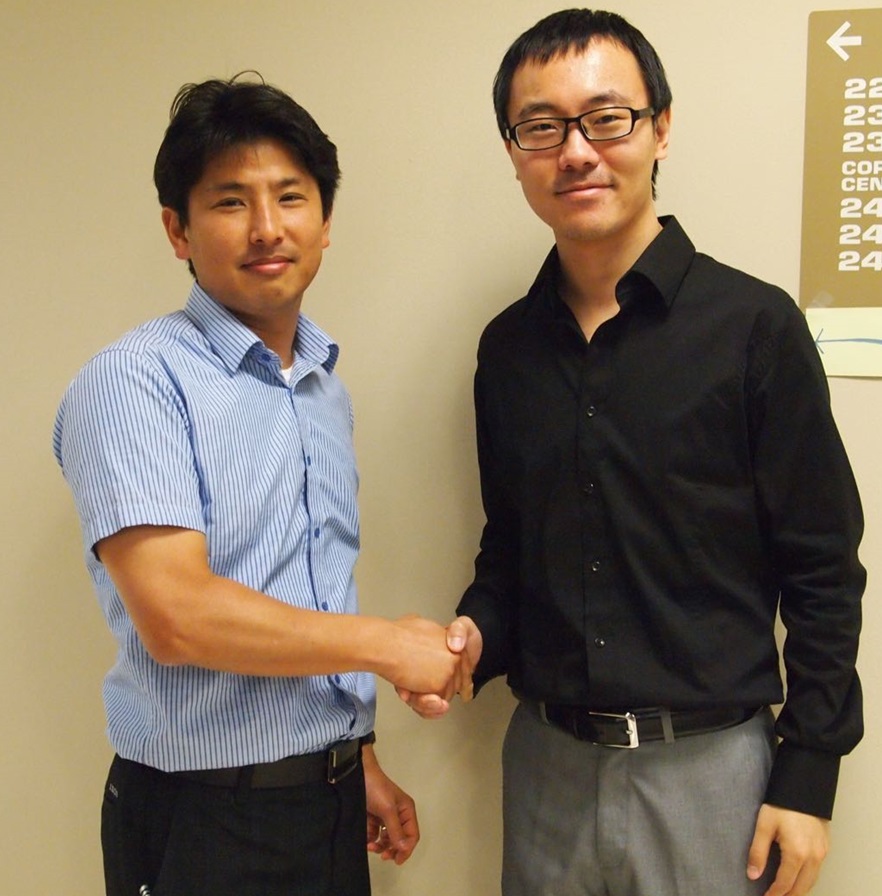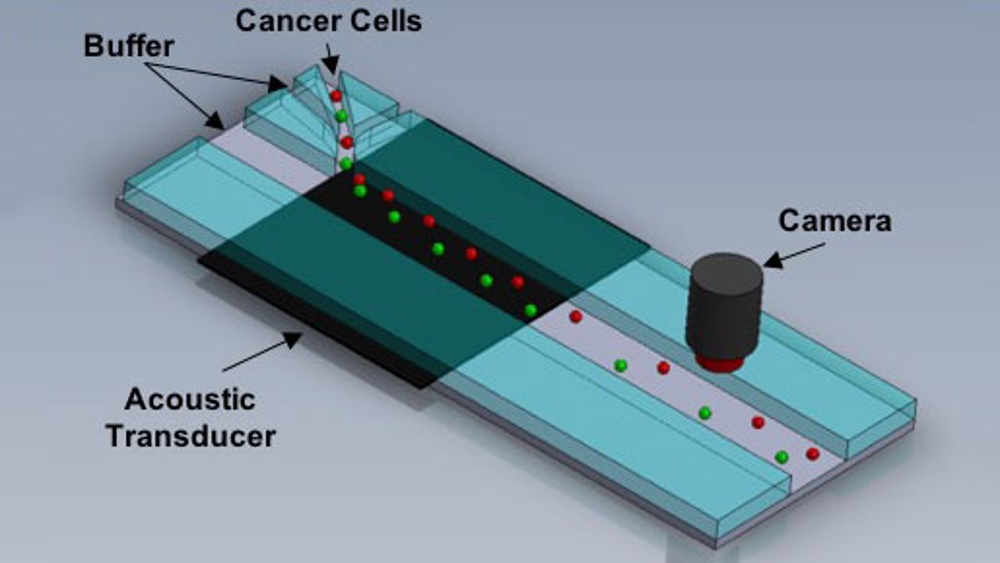
Cancer research, much like the disease itself, starts with living cells.
While we know that the chemical makeup of cancerous cells can differ, in the past decade, variations in their mechanical properties have stolen the spotlight. However, collecting information about the mechanical properties of cancer cells has proven to be a challenge for researchers due to the complex design and operation of current cellular measurement technology. Especially when such measurements have to be done one tiny cell at a time.
In order to simplify and cut the cost of such devices, a team of researchers at Texas A&M University has created an acoustofluidic cytometer that uses sound waves to measure the stiffness and compressibility of cancer cells. This not only will aid in the classification of cancer types, but will also make diagnosis more efficient and observable.
The team is led by Dr. Arum Han, professor and Presidential Impact Fellow in the Department of Electrical and Computer Engineering at Texas A&M, and Dr. Han Wang, professor at Tsinghua University. Their recent publication in the journal Lab on a Chip was featured in an article on PhysicsWorld.
So why is it important to understand the biophysical properties of cancer cells?
Characteristics that set these cells apart from their healthy counterparts offer insight into the disease that is invaluable to the future of cancer research.
“For example, if you're trying to figure out if a biopsy contains cancer cells or not, you might be able to look at the mechanical properties of the cells to determine if cancer is present in the sample,” said Han.

He went on to explain another scenario: how the biophysical properties of cancerous cells change as they advance through stages and metastasize.
“One hypothesis is that as cancer cells progress, they become softer, which makes it easier for them to circulate and spread inside a human body,” said Han. “So if a late stage cancer has an identifiably different biophysical property than earlier stages, it could be possible to tell what stage a cancer is in by simply measuring the mechanical property of cell types. This could be used to quantify the stages of cancer.”
While many microfluid devices use pushing mechanisms and microstructures to measure the compressibility and stiffness of cancer cells, Han’s acoustofluidic cytometer utilizes soundwaves.
Acoustic waves traveling in a rectangular microfluidic channel form a “standing wave,” which creates zones called acoustic pressure nodes. Cells flowing inside the channel will move toward and gather near these pressure nodes. The speed at which the cells move varies depending on how soft or firm they are, revealing their compressibility and stiffness without the need for any complex mechanisms.
By observing how cancer cells react under the influence of acoustic soundwaves, researchers can gain insight about the cells’ mechanical properties, which can then be correlated to different stages of cancer.
“The simplicity of our device and its operation is what makes this particular work very exciting compared to previous methods of measurement, which require very expensive equipment or very complicated microstructures to work,” said Han.